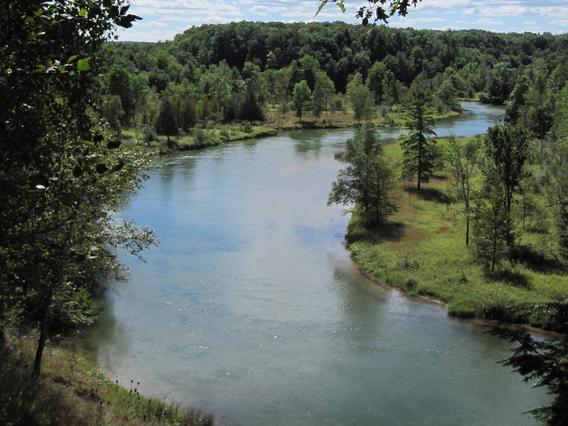
The Aquatic Invasive Species (AIS) Risk Assessment Framework evaluates changes in water bodies, biology, ways used, and resources produced.
Challenge: Managing and preventing the spread of invasive species is difficult, risk assessments prioritize prevention, while being most limited in scope and fail to account for changing conditions.
Principal Investigator(s):
- Mark Wiltermuth (USGS Upper Midwest Environmental Sciences Center)
- Benjamin Letcher (USGS Conte Anadromous Fish Laboratory - Leetown Science Center)
- Nicholas Phelps (University of Minnesota)
- Jordan Read (USGS Water Resources Mission Area)
Partner:
- University of Minnesota
Aquatic invasive species threaten our lakes, streams, and wetlands. These species not only change the biology within the waterbody, but they can change the way we use those waterbodies and the resources they produce. Those changes may have large economic impacts, such as direct management costs and indirect costs to fisheries, tourism and commerce. These species can be small like zebra mussels or large like Asian carp, but one thing they have in common is being difficult to manage and to prevent further spread.
To help inform control measures for aquatic invasive species, local, state, and federal natural resource management agencies have been working to develop risk assessments to understand the potential spread or distribution of priority species. This is essential to inform strategic prevention programs and allocation of scarce resources. While a useful first step, many of the current assessments are limited in geographic scope, developed with narrow applicability to one species, lack key factors such as water temperature for large networks of wetlands, streams, and lakes, and/or assume status quo environmental conditions. An opportunity exists to leverage ongoing efforts to increase the complexity of existing or new models (e.g., that predict water temperature across large scales) and incorporate climate projections that will aid researchers in making risk assessments of aquatic invasive species dispersion relevant under future climate scenarios.
The goal of this project is to build a team, organize and evaluate available data, and ultimately develop a plan for a large collaborative effort to create an aquatic invasive species risk assessment framework that improves and integrates existing assessments and climate scenarios at an upper Midwest regional scale. This work will be done with an emphasis on practical management applications, working closely with aquatic invasive species professionals and researchers to ensure that future risk assessment outputs are useable and their interpretation intuitive.
Read more from the CASC Project Explorer.
